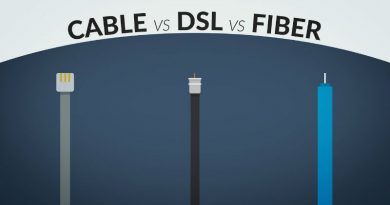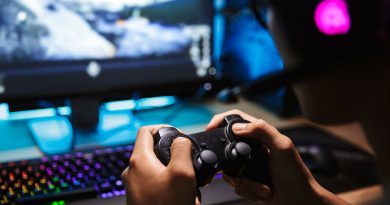How fast does your broadband work? A full upload and download guide and how to review it
In addition to price, speed is one of the key factors to consider when choosing a broadband agreement. It impacts what you can do with the broadband service, how long it takes to complete a task, and how many people can simultaneously use the connection.
All ISPs quote broadband download speed as a major part of their advertising. But it’s not always clear what speed will satisfy you. And then, among many other technical terms, there are upload speeds, bits and bytes, speed tests, fiber and cable.
We’ll explain in this guide what broadband speeds mean, what broadband is available, and how to tell if a package has a good broadband speed for your needs.
How are broadband speeds measured?
You may also be lucky enough to have the option of broadband with speeds of gigabits per second (Gbps/Gb), though this accounts for a very small percentage of broadband services.
The speed of Broadband is measured in bits per second (bps). It shows us how quickly data is transferred to or from your resident broadband.
The colossal majority of home broadband speeds you’ll see when selecting a broadband package will be megabits per second (Mbps/Mb) or kilobits per second (Kbps/Kb).
Most commonly Kb is used when talking about upload speeds, though premises of small minority – especially those in rural areas – They may suffer from low upload speed which is measured in Kb rather than Mb.
If you are interested in learning more about the technical jargon, we have a breakdown below of what all this means.
But there are two key points you need to know to compare and buy broadband:
- GB is faster than Mb, and Mb is faster than Kb.
- A bigger number means a faster connection.
Download speed
Download speed is the pace at which data is transferred to you (websites, apps, music, etc.);
The faster you download the more bits you have per second. This not only means you can download a file much faster but you can stream video and audio of higher quality. More users will also be able to handle the connection simultaneously.
For home broadband, the advertised download speeds range from an average of 10Mb to just over 500Mb for most providers. Pretty impressive considering that a download speed of 2Mb was seen as cutting edge, not too long ago.
There are providers offering speeds of up to 1000Mb or more, but there is very limited availability of these currently.
But broadband download speed doesn’t have to be a big factor in your choice about which Wi-Fi deal to choose from. If you’re just about to check your email and surf around a few web pages, the slowest unlimited internet packages available through Broadband may be enough.
But if you’re going to be sharing the broadband between several people, downloading lots of files, playing games, or listening and watching lots of music and video streaming it’s going to be more of a concern.
Slow download speed on the internet can get very annoying if your downloads take forever and the video clip you are trying to watch continues to stall. In general, if you are going to frequently download or stream, share the connection with others, or play a lot of online games, it’s worth looking at the fastest connection you can afford comfortably.
Upload speed
Upload is data that goes download in the opposite direction. Upload speed is the rate at which data is sent to the internet (such as your fabulous new holiday pics and videos)-maybe to a social networking site like Facebook.
Home broadband upload speeds are typically significantly slower than download speeds. The reason for this is that we typically do far more downloading than uploading, so downloading is given priority by the ISPs (which regulate how their networks deal with the various types of internet traffic).
Home broadband upload speeds are commonly much slower than download speeds. The reason behind this is that we typically do far more downloading than uploading, so downloading comes as a priority given by ISPs (which regulates how their networks deal with the different types of internet traffic.)
Upload speed is more important for people who do large amounts of uploading, like someone who works from home and wants to exchange files with a remote network, or people who play a lot of online games-especially if they’re hosting.
Ping and latency
Ping is a broadband connection’s reaction speed-the time it takes to receive a reply after the data is sent. Measure this latency (or lag) in milliseconds (ms).
Generally speaking, this isn’t something you need to worry about as even the cheapest broadband home can deliver a fast ping rate. The one exception is the broadband satellite, which has very high latency due to the delay in the signal coming from and to the satellites. This makes it unsuitable for real-time communications based on online gaming or other tasks.
What broadband speeds are available?
There are terms for various types of broadband that you might see advertised when you are going for a broadband deal. These aren’t official names, and the definitions may vary, but they provide a rough guide to what kind of broadband services and speeds you might find.
What speed do I need for Broadband?
The right broadband speed for you depends on how you’re using the internet, and how many people may be using the connection at the same time.
Web browsing, email, and social media: Standard broadband with an average 10Mb speed is going to be enough. General web browsing requires no very quick connection. Email isn’t particularly demanding if you don’t send or receive large files very often. The same is true for social media; you don’t need a superfast connection to browse Facebook. However, if you frequently upload large video or audio files, you may benefit from a quicker speed.
Streaming audio (e.g. Spotify):
A standard broadband connection can stream high-quality music comfortably.
Streaming video (e.g. Netflix, iPlayer):
A broadband connection capable of holding 2-3Mb will be able to stream video from Netflix and other services, though you want speeds of at least 5Mb for the best experience. Netflix recommends 3Mb as standard, 5Mb as high definition, and 25Mb as ultra HD. For anyone using their broadband to stream regularly, we would recommend a fiber-optic service as the best option.
Downloading files:
The files can be downloaded from any broadband service. Then Standard 10Mb broadband is sufficient for occasional or non-urgent downloads. If you download large files very frequently, a superfast connection will make the transfer much quicker.
Uploading files:
For anyone who regularly sends files to the Internet, it’s upload speed matters. Superfast broadband is very beneficial here as there are very low upload speeds on standard broadband.
Recall that the more people you share the connection, the greater the on-line demand. If you have a busy household then even simple web browsing might require a superfast connection to provide everyone with an enjoyable experience.
What can affect my broadband speed?
Sometimes your broadband might be slower than usual. There can be several reasons, including:
- Many people or devices using the connection. Have you got family or housemates? They could be downloading or streaming video. If your connection isn’t shared, check how many devices enjoying the luxury that you paying for.
- Peak time slow-down. Broadband can get slower when more people use it during busy periods.
- Poor Wi-Fi signal. A strong Wi-Fi signal will give you the best speeds
- Apps and updates. The software may use broadband for downloading or uploading on your devices. Especially the software updates can be substantial.
- Traffic management. Some providers have traffic management policies that prioritize different usage types and slow out other tasks.
How Internet Speed is impacted by Wi-Fi Router?
A weak Wi-Fi signal can impact broadband speed very significantly. But it can be solved by ensuring that the router is positioned optimally in your home, installing signal boosters, or upgrading to a better quality router.
Locate the router in a central location for the best performance, away from walls and sources of interference such as cordless phones, microwaves, and fridges.
But Wi-Fi can still limit broadband speed even with a strong signal. If your Wi-Fi broadband router uses an older type of Wi-Fi technology that has a slower data transfer rate than broadband, the difference in speed may be noticeable. Use a router to support the latest specifications for the best performance and ensure that all connected devices meet the same standard as well.
And connect your devices with a network cable instead of Wi-Fi whenever possible, as this will provide a quicker, more reliable service.




